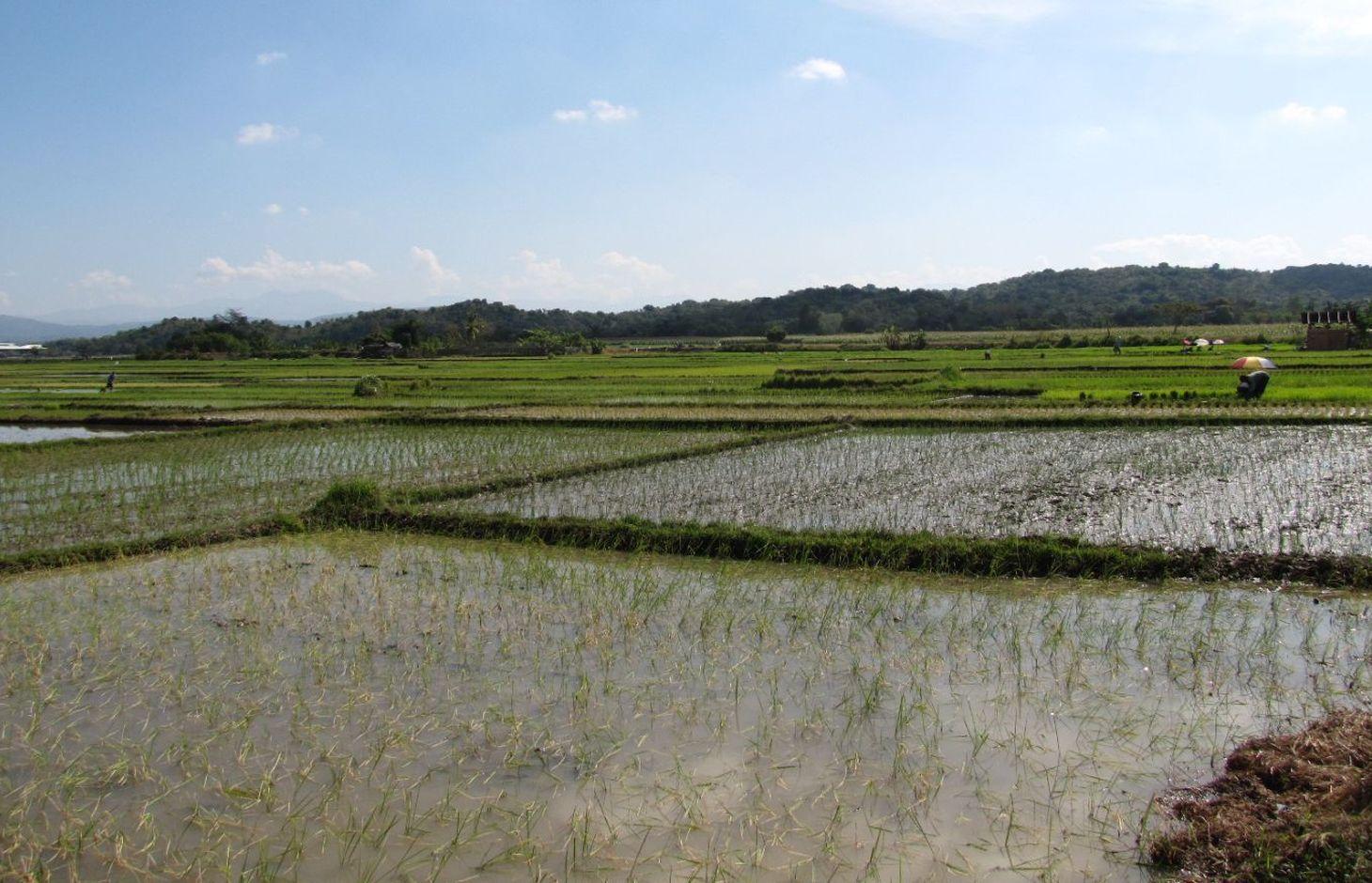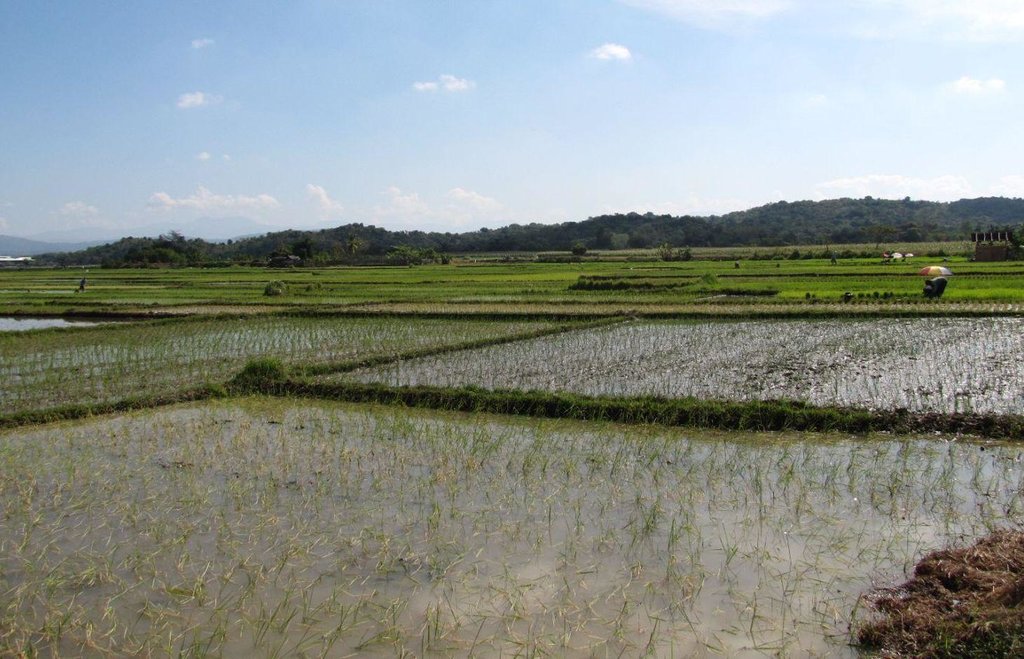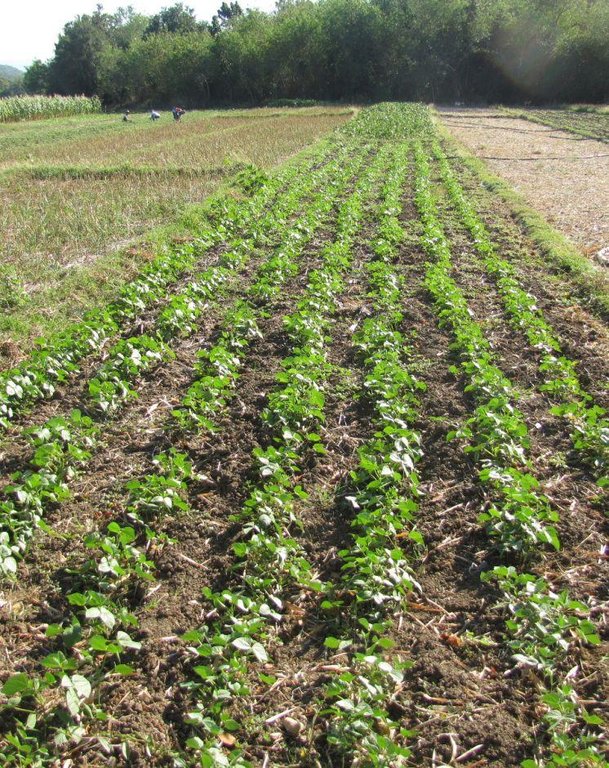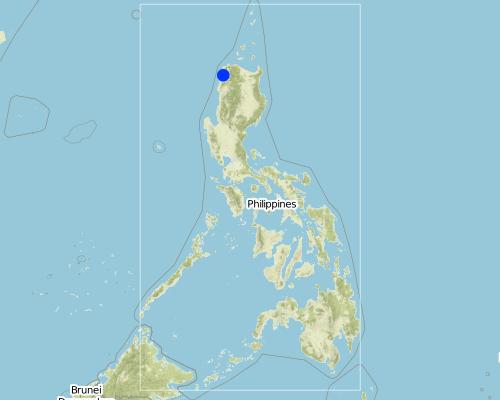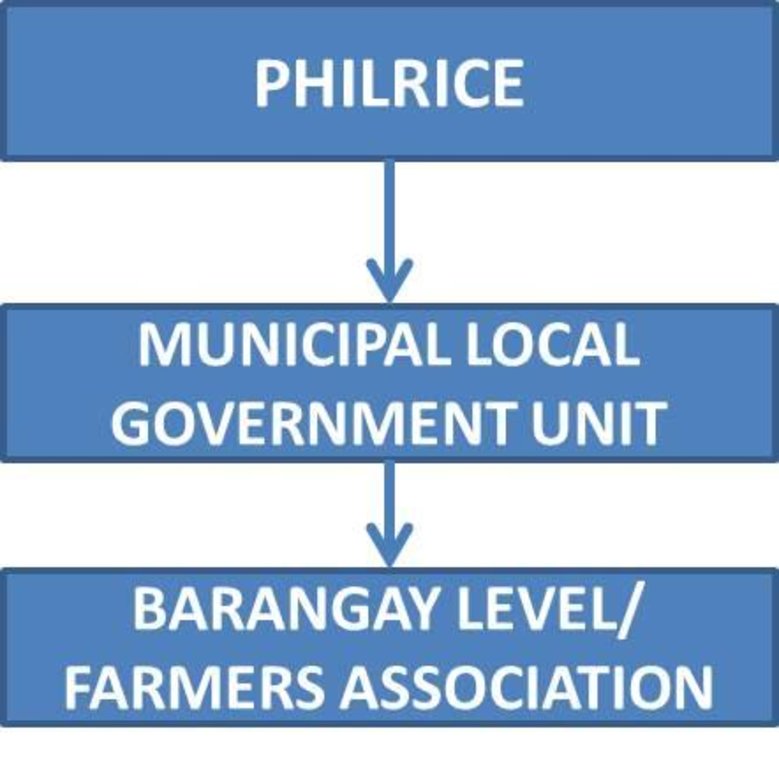Palayamanan: Climate Change Adaptation Strategy for Lowland Ecosystem [Филиппины]
- Создание:
- Обновить:
- Составитель: Philippine Overview of Conservation Approaches and Technologies
- Редактор: –
- Рецензент: Deborah Niggli
Palayamanan
approaches_1972 - Филиппины
Просмотреть разделы
Развернуть все Свернуть все1. Общая информация
1.2 Контактные данные специалистов и организаций, участвующих в описании и оценке Подхода
Ответственный (-ые) специалист (-ы)
Специалист по УЗП:
Специалист по УЗП:
Corales Dr.Rizal G.
rg.corales@philrice.gov.ph
Philippine Rice Research Institute
Science City of Munoz
Филиппины
Специалист по УЗП:
Baradi Dr. Mary Ann U.
Philippine Rice Research Institute
Batac City
Филиппины
Название проекта, содействовавшего документированию/оценке Подхода (если применимо)
Decision Support for Mainstreaming and Scaling out Sustainable Land Management (GEF-FAO / DS-SLM)Название организации (-ий), содействовавших документированию/оценке Подхода (если применимо)
Department of Agriculture-Region VIII (DA-8) - Филиппины1.3 Условия, регламентирующие использование собранных ВОКАТ данных
Когда были собраны данные (на местах)?
10/03/2016
Составитель и ответственный/-ые специалист(-ы) согласны с условиями, регламентирующими использование собранных ВОКАТ данных:
Да
1.4 Ссылка (-и) на Анкету (-ы) по Технологиям УЗП
2. Описание Подхода УЗП
2.1 Краткое описание Подхода
Synergistic mix of farming ventures implemented by the farm family based on the existing environment and their resources to address food security, income instability, and sustainability.
2.2 Подробное описание Подхода
Подробное описание Подхода:
The objectives of the approach are the following: to improve resources allocation; to enhance biodiversity and ecological balance; to reduce production risks; and to increase cropping intensity, productivity, profitability, and economic stability. It also includes continuous food supply and higher income for land users. With Palayamanan, the farm is not just intended for rice. It is about food security, livelihood and empowering farmers to become better decision makers and resilient to climate change. It also aims to develop land users to become farmer-researchers, extension workers and entrepreneurs.
Methods: Participatory approach with the stakeholders/land users.
Implementation comprised the following stages: (1) Selection of the demonstration sites an farmer-partners; (2) Conduct participatory rapid appraisal on the sites; (3) Planning; (4) Conduct of training for the farmers (Farmers Field School) and for the Agricultural Extension Workers; (5) Establishment of the demonstration farm; (6) Monitoring and Evaluation; and (7) Human Resource Development for Farmers (to become farmer-researcher, extension worker, entrepreneur)
Stakeholders: A. Philippine Rice Research Institute (PhilRice): take the lead in the implementation of the program; facilitate the conduct of training;provide technical assistance to the program; and monitor the progress of the program.
B. Local Government Unit (Agriculture Office): provide support to the activities of the program; spearhead the dissemination and expansion of the program within their concerned municipality.
C. Farmer: participate in various activities of the program from planning to establishment; conduct on-site researches.
The approach introduced a systematized method of farm management involving technologies and practices to utilize available resources without compromising human health and environment. Some of the technologies incorporated under this approach are the following: crop rotation, aquaculture, waste recycling, diversified cropping, alternate wetting and drying, nutrient management, and integrated pest management.
2.3 Фотографии, иллюстрирующие Подход
2.5 Страна/ регион/ место, где применялся Подход
Страна:
Филиппины
Административная единица (Район/Область):
San Nicolas, Dingras, Currimao, Ilocos Norte
Map
×2.6 Даты начала и окончания реализации Подхода
Год начала реализации:
2001
Год окончания (Если Подход больше не применяется):
2009
Комментарии:
Introduced by the Philippine Rice Research Institute (PhilRice)
2.7 Тип Подхода
- в рамках проекта/ программы
2.8 Каковы цели/ задачи Подхода
The objectives of the approach are the following: to improve resources allocation; to enhance biodiversity and ecological balance; to reduce production risks; to increase cropping intensity, productivity, profitability, and economic stability. It also includes continuous food supply and higher income for land users. With Palayamanan, the farm is not just intended for rice. It is about food security, livelihood and empowering farmers to become better decision makers and resilient to climate change.It also aims to develop land users to become farmer-researchers, extension workers and entrepreneurs.
2.9 Условия содействующие применению Технологии/ Технологий в рамках Подхода или затрудняющие его
Наличие/ доступность финансовых ресурсов и услуг
- содействуют
Organized the League of Sangguniang Bayan Chairperson for Agriculture to ensure the source of finance for the expansion areas
Институциональные условия
- содействуют
LGUs were involved and invited during training, seminars and other activities related to the Palayamanan during the implementation to gain their support in the sustainability of the program; Organization of farmers association.
Осведомленность в области УЗП, доступность технической поддержки
- содействуют
capacity building and training such as conduct of Farmers Field School.
3. Участие и распределение ролей заинтересованных сторон
3.1 Заинтересованные стороны, участвующие в реализации Подхода и их роли
- местные землепользователи/ местные сообщества
- эксперты по УЗП/ сельскому хозяйству
- местные власти
Local Government Unit
3.2 Участие местных землепользователей/ местных сообществ на разных стадиях реализации Подхода
| Участие местных землепользователей/ местных сообществ | Перечислите участников и опишите их вовлеченность | |
|---|---|---|
| инициирование/ мотивация | пассивное | land users were informed about the program through technical briefing/consultation meetings |
| планирование | интерактивное | PhilRice in consultation with the land users and LGUs |
| выполнение | интерактивное | Land users have the option on what technologies they will implement with the technical assistance of PhilRice |
| мониторинг/ оценка | интерактивное | farm record keeping, testimonial during field day and Palayamanan Congress, land user as correspondent during project monitoring |
| research | интерактивное | land users developed their own on-site research; they presented the results in a research study paper contest during Palayamanan Congress |
3.3 Схема реализации (если имеется)
Описание:
PhilRice introduced and implemented the Palayamanan to one barangay per municipality. The concerned Local Government Unit through its Agriculture Office is responsible to radiate and expand the program to other barangays.
3.4 Принятие решений по выбору Технологии/ Технологий УЗП
Укажите, кто принимал решение по выбору применяемой Технологии/ Технологий:
- в основном землепользователи при поддержке специалистов по УЗП
4. Техническая поддержка, повышение компетенций и управление знаниями
4.1 Повышение компетенций/ обучение
Проводилось ли обучение землепользователей/ других заинтересованных лиц?
Да
Укажите, кто проходил обучение:
- землепользователи
- местный персонал/консультанты
- Agricultural Extension Workers
Тип обучения:
- в ходе работы
- обмен опытом между фермерами
- опытные участки
- общие собрания
Рассматриваемые темы:
Farmers Field School (FFS) were conducted to capacitate and inform the land users on various farming technologies (i.e. fertilizer, crop, water, and pest management) and entrepreneurship. Training also incorporated topics on post harvest and farm record keeping. There were also training of trainers (TOT) for farmers on rice production and other crops.
4.2 Консультационные услуги
Есть ли у землепользователей возможность получать консультации?
Да
Укажите, где именно оказываются консультационные услуги:
- в постоянно функционирующих центрах
Описание/ комментарий:
Advisory through Radio Program, Farmers served as correspondents
4.3 Институциональная (организационная) поддержка
В ходе реализации Подхода были ли организованы новые институциональные структуры или поддержаны уже существующие?
- да, умеренно
Укажите уровень, на котором структуры были укреплены или вновь созданы:
- местные
Опишите организацию, функции и ответственность, членство и т.д.
The local government was not supportive in the early stage of the program but after witnessing the positive impact in the agricultural sector, they started to finance the establishment of training centers in the barangays. Agricultural technicians from the LGU were active in the sustainability of the program.
Укажите тип поддержки:
- финансовая
- повышение компетенций/ обучение
- оборудование
4.4 Мониторинг и оценка
Являются ли мониторинг и оценка частью Подхода?
Да
Если да, будет ли данный документ использоваться для мониторинга и оценки?
Нет
4.5 Научные исследования
Были ли научные исследования частью Подхода?
Да
Укажите темы исследований:
- экономика / маркетинг
- экология
- технология
Напишите подробнее и назовите тех, кто выполнял исследования:
Researches were conducted bu the Philippine Rice Research Institute (PHILRICE)
5. Финансирование и внешняя материальная поддержка
5.1 Годовой бюджет мероприятий по УЗП в рамках Подхода
Если точный годовой бюжет неизвестен, укажите примерный диапазон затрат:
- 2000-10000
Комментарий (например, основные источники финансирования/ ключевые доноры):
PhilRice 50%, LGU 20%, Farmers' association 30%
5.2 Финансирование и внешняя материальная поддержка, предоставляемая землепользователям
Предоставлялась ли землепользователям финансовая/ материальная поддержка для применения Технологии /Технологий?
Да
Если да, укажите тип(-ы) поддержки, кто ее предоставил и условия предоставления:
Subsidies from the government were given in terms of seedlings,training, tools and equipment.
5.3 Субсидии на отдельные затраты (включая оплату труда)
- оборудование
| Укажите, какие ресурсы были субсидированы | В какой степени | Опишите субсидии подробнее |
|---|---|---|
| инвентарь/ инструменты | профинансированы частично | |
- сельскохозяйственные
| Укажите, какие ресурсы были субсидированы | В какой степени | Опишите субсидии подробнее |
|---|---|---|
| семена | профинансированы частично | |
| удобрения | профинансированы частично | |
- инфраструктура
| Укажите, какие ресурсы были субсидированы | В какой степени | Опишите субсидии подробнее |
|---|---|---|
| greenhouse, training center | профинансированы полностью | |
Если труд землепользователя был существенным вкладом, укажите, был ли этот вклад:
- добровольный
5.4 Кредитование
Предоставлялись ли в рамках Подхода кредиты на мероприятия УЗП?
Да
Укажите условия предоставления (процент, окупаемость и т.д.):
Credit was provided in terms of agricultural inputs (seeds and fertilizers) and is paid in cash after harvest. This payment will serve as revolving fund of the farmers association.
Перечислите заёмщиков:
Credit receivers are land users covered under the approach.
5.5 Другие методы или инструменты стимулирования
Использовались ли другие методы или инструменты стимулирования для продвижения Технологий УЗП?
Нет
6. Анализ влияния и заключительные положения
6.1 Влияние Подхода
Сумел ли Подход помочь землепользователям внедрить и поддерживать технологии УЗП?
- Нет
- Да, немного
- Да, умеренно
- Да, существенно
There was a shift in the cropping system from mono cropping to diversified cropping resulted in the improvement soil properties. Through the approach, location specific rice-based farming technologies were developed to address the issue on climate change.
Сумел ли Подход расширить возможности социально и экономически уязвимых групп?
- Нет
- Да, немного
- Да, умеренно
- Да, существенно
Farmers were trained as extension workers to serve as resource speaker in training other farmers within their municipality. Through this, their confidence and self esteem, specially, in dealing with other people were developed. The approach introduced cost-saving and yield-enhancing technologies to optimize the farm operation.
Сумел ли Подход способствовать улучшению продовольственой безопасности/ качества питания?
- Нет
- Да, немного
- Да, умеренно
- Да, существенно
The approach provided knowledge, as well as, experience to the land users that was eventually applied in improving their farming system to increase their farm production and income. Diversified farming sustain the farmer's food requirement and also generate income from the different crops and animals grown.
Did other land users / projects adopt the Approach?
- Нет
- Да, немного
- Да, умеренно
- Да, существенно
Seventy percent (70%) of the land users within the area adopted the program because of the successful initial program implementation in the locality.
Did the Approach lead to improved livelihoods / human well-being?
- Нет
- Да, немного
- Да, умеренно
- Да, существенно
Some of the land users who practice Palayamanan, namely Teresita Allado and Honorio Dela Cruz Jr., were named as farmer-scientists or “magsasaka-siyentista”. Due to this approach, other programs from government and non-government agencies were introduced and given to the land users. In addition, diversified cropping was practiced thus increasing the income of farmers which was used in the construction of their homes, buying of livestock and acquiring additional land for farming. Land users increased their risk taking ability or investing capacity towards farming.
6.2 Основные причины, побуждающие землепользователей внедрять УЗП
- рост продуктивности
- рост прибыли (доходности) и рентабельности
- well-being and livelihoods improvement
6.3 Долгосрочная устойчивость мероприятий в рамках Подхода
Могут ли землепользователи самостоятельно (без внешней поддержки) продолжать применение того, что было реализовано в рамках Подхода?
- да
Если да, опишите как:
The approach would continue without the support from Philippine Rice Research (PhilRice) since the technologies were successfully transferred to the land users. The land users or farmer-partners recognized the positive impact and outcome of the technologies in their own farm areas. Moreover, farmer-partners were actively involved in the dissemination on the developed location-specific technologies.
6.4 Сильные стороны/ преимущества Подхода
| Сильные стороны/ преимущества/ возможности по мнению землепользователей |
|---|
| Farmers' receptiveness to the technologies under the approach. |
| Land users were empowered due to the participatory approach of the program.They developed location specific technologies and practices and are confident in disseminating the knowledge to fellow farmers. |
| Сильные стороны/ преимущества/ возможности по мнению составителя или других ключевых специалистов |
|---|
| Research studies conducted by the farmers. |
| Good monitoring activity during the implementation stage of the program. |
| Land users/farmer-partners were empowered since they have the option on what technologies they want to apply/used in their farm. |
| Strong cooperation among the implementing partners including PhilRice, LGUs, and farmer-partners in the sustainability of the approach through provision of technical assistance, construction of training centers, subsidy in agricultural inputs and other activities related to Palayamanan. |
6.5 Слабые стороны/ недостатки Подхода и пути их преодоления
| Слабые стороны/ недостатки/ риски по мнению составителя или ответственных специалистов | Возможные пути их преодоления/снижения? |
|---|---|
| Not fully strong collaboration from other agencies | Develop convergence among concerned specialists and agencies |
| Sustaining the farmer’s participation/attention | Selection/Assessment for identifying the potential beneficiaries |
| Inability to monitor the sustainability of the project due to no funding | Institutionalize who will monitor the sustainability of the project |
| No approved budget for the sustainability/exit plan of the program | Institutionalize who will monitor the sustainability of the project |
7. Справочные материалы и ссылки
7.1 Методы сбора/источники информации
- выезды на места, полевые обследования
- опросы землепользователей
7.2 Ссылки на опубликованные материалы
Название, автор, год публикации, ISBN:
PALAYAMANAN: A RICE-BASED FARMING SYSTEMS MODEL FOR SMALL-SCALE FARMERS, RG CORALES et al, 2005
Где опубликовано? Стоимость?
http://www.cabi.org/gara/FullTextPDF/2009/20093019315.pdf
Ссылки и модули
Развернуть все Свернуть всеСсылки
Нет ссылок
Модули
Нет модулей


